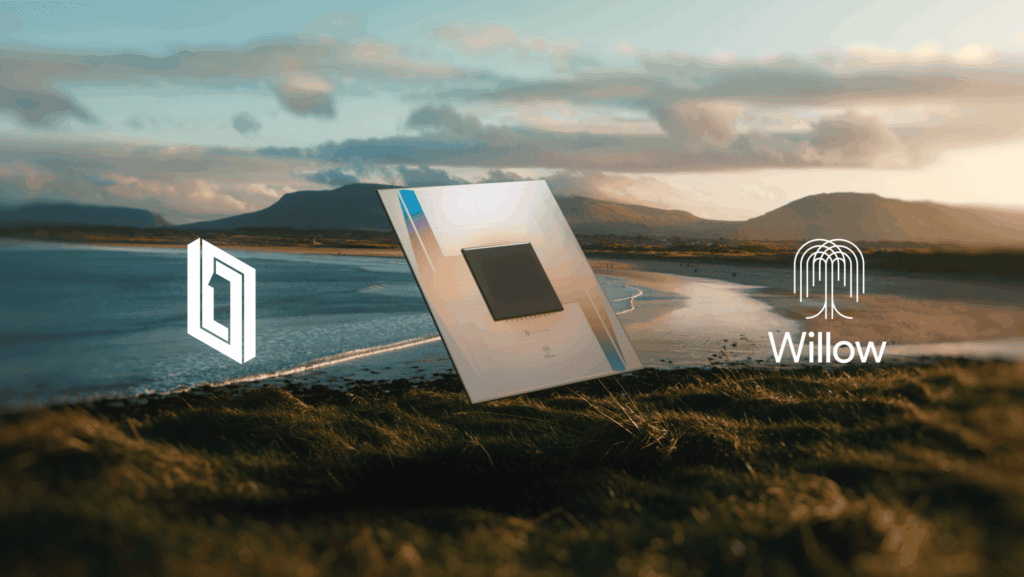Insider Brief
- Rice University researchers have developed a new optical cavity that uses chiral quantum vacuum fluctuations to alter material properties without the need for strong magnetic fields.
- The cavity design, built using lightly doped indium antimonide, selectively enhances one direction of circularly polarized light, enabling new material states such as a special insulating phase in graphene predicted to be useful for quantum computing.
- The team used simulations and a hybrid classical-quantum modeling approach to predict that this chiral cavity could serve as a general platform for engineering quantum materials through vacuum field manipulation.
PRESS RELEASE — Vacuum is often thought of as empty, but in fact it is teeming with fleeting energy fluctuations — virtual photons popping in and out of existence that can interact with matter, giving rise to new, potentially useful properties. Researchers use optical cavities, structures made of mirrors facing one another, to confine these fluctuations, harnessing their effects to engineer new forms of matter.
Conventional optical cavities boost fluctuations, or vacuum fields, for both right- and left-handed circularly polarized light. Rice University researchers and collaborators have developed a new cavity design that selectively enhances the quantum vacuum fluctuations of circularly polarized light in a single direction, achieving chirality — a feat that typically requires the use of a strong magnetic field.
According to a study published in Nature Communications, the research team led by Junichiro Kono used lightly doped indium antimonide to construct the chiral cavity. The researchers also conducted comprehensive theoretical investigations to predict how the new cavity design would transform the properties of materials placed inside it. They found that graphene — a strong, lightweight single-atom thick layer of carbon atoms arranged in a hexagonal lattice pattern — would be transformed into a special insulator useful in quantum computing applications.

The new chiral cavity design opens the door to controlling material properties without the need for high magnetic fields or other external stimuli.
“Unlike traditional approaches that rely on strong magnetism or other extreme conditions to induce material transformations, our model proposes to transform a material simply by placing it inside a cavity,” said Kono, Rice’s Karl F. Hasselmann Professor in Engineering, professor of electrical and computer engineering and materials science and nanoengineering and director of the Smalley-Curl Institute. “Our chiral cavity offers a platform for harnessing the subtle but powerful quantum effects of vacuum to engineer new material properties, potentially paving the way for novel quantum devices and technologies.”
Building a superior chiral cavity with a low magnetic field requirement
In earlier attempts to realize this specific type of optical cavity, achieving chirality required a strong magnetic field. However, such high magnetic fields also affect the materials placed inside the cavity, often causing undesirable effects.
“Our goal has been to reduce the required magnetic field or ideally eliminate it entirely,” said Fuyang Tay, an alumnus of Rice’s graduate program in applied physics and first author of the study. “This has been a notoriously difficult challenge.”
To achieve this goal, the team incorporated lightly doped indium antimonide — a common semiconductor used in infrared detectors — into a photonic-crystal cavity known to facilitate strong, long-lasting light-matter interactions.
“The choice to use lightly doped indium antimonide to construct the cavity made all the difference — it allowed us to turn an ordinary optical cavity into a chiral cavity using a low magnetic field,” said Andrey Baydin, assistant research professor in electrical and computing engineering at Rice. “Since the semiconductor’s charge carriers are ‘light’, our model predicts that a tiny magnetic field — an order of magnitude lower than those used in previous attempts — will be sufficient to suppress vacuum fluctuations in one direction while leaving the others untouched.”
To optimize the cavity design, Tay collaborated with Alessandro Alabastri, assistant professor of electrical and computer engineering at Rice, and Stephen Sanders, a postdoctoral researcher in Alabastri’s lab, to develop a series of numerical simulations.
“Simulations allowed us to refine the cavity design without the need to fabricate physical prototypes, which not only significantly accelerated the development process but also helped us explore a wider range of design parameters efficiently,” Alabastri said.
By carefully tuning the parameters of each cavity layer, they achieved a chiral cavity with a uniform, circularly polarized vacuum field that lasts long enough to modify a target material placed inside it.
Classical and quantum models predict a novel state for graphene in the chiral cavity
To understand how the chiral cavity would affect a material placed inside it, the researchers used a comprehensive multiscale approach bridging classical and quantum physics. They mapped the electromagnetic field profiles inside the cavity within a classical framework. They also used density functional theory to obtain the target material’s electronic properties and a cavity quantum electrodynamics model to describe light-matter interactions at the quantum level.
“This hybrid approach allowed us to make much more realistic predictions,” said Ceren Dag, assistant professor at Indiana University and a theoretical physicist involved in the study.
Graphene served as a case study for testing how a material responds when placed in the chiral cavity.
“Based on our calculations, we predicted that placing graphene in this cavity opens a band gap that changes its topological properties and turns it into a special kind of insulator that will be useful for building new types of quantum devices,” Dag said.
Developing innovative quantum technologies
“In addition to identifying a novel quantum state for graphene, the framework we built can be extended to other materials embedded in a chiral cavity,” said Vasil Rokaj, assistant professor at Villanova University and co-author on the study.
Kono said the “new cavity design provides an unbiased, versatile and practical platform for researchers to explore how chiral vacuum fluctuations can interact with matter and modify it. This foundational work opens the door to a new field of engineering novel quantum materials by simply reshaping vacuum.”
The research was supported by the U.S. Army Research Office (W911NF2110157), the Gordon and Betty Moore Foundation (995764), the Robert A. Welch Foundation (C-1509) and the National Science Foundation (2116679). All opinions expressed in this press release are the author’s and do not necessarily reflect the policies and views of the funding entities.
— By Raji Natarajan, science writer for the George R. Brown School of Engineering and Computing

















